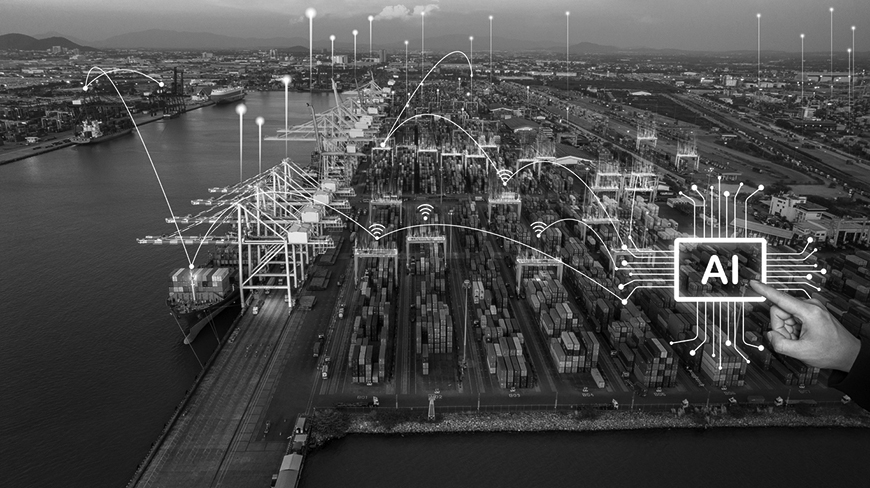Artificial intelligence (AI) is no longer a futuristic concept or an emerging trend, it’s a present-day force that is actively reshaping industries across the globe. Supply chain management is one of the most promising areas where AI is proving to be transformative. In 2025, many companies are already experimenting with AI-powered tools and platforms to gain efficiency, reduce costs, and increase agility. Yet, for all the buzz, most organizations are still in the early stages of adoption and far from realizing AI’s full potential.
So, what’s holding companies back? It’s not a lack of interest or ambition. Rather, the road to effective AI implementation in supply chain operations is a complex journey, one that requires more than simply plugging in a new technology. To truly harness AI’s power, businesses need to lay a solid foundation, starting with their internal processes, culture, and digital readiness.
The Strategic Value of AI in the Supply Chain
The primary appeal of AI in the supply chain lies in its ability to generate deep, actionable insights. By analyzing vast volumes of data in real-time, AI can uncover patterns and trends that humans simply can’t see. This allows companies to forecast demand with greater accuracy, detect and respond to disruptions faster, automate procurement and inventory decisions, and even create predictive maintenance schedules for logistics equipment.
Moreover, AI can break down data silos across functions and partners, delivering end-to-end visibility from sourcing to delivery. This kind of transparency enhances decision-making, reduces waste, and supports sustainability goals, critical for companies facing growing pressure from regulators, investors, and customers alike.
However, the leap from theory to practice is significant. Many organizations underestimate the groundwork required to prepare for AI. Without strong foundations, AI initiatives are likely to underperform or fail entirely.
Foundational Elements: Preparing for AI in Supply Chain Management
Before rushing to implement AI solutions, companies need to assess and strengthen several core areas:
1. Change Management
Introducing AI often requires a shift in mindset and roles. Employees may fear automation will replace their jobs, or they may not trust AI-generated insights. Leaders must prioritize transparent communication, training, and engagement strategies to foster a culture of innovation and trust. Without addressing the human side of change, even the most advanced tools will struggle to gain traction.
2. Process Modernization
Outdated, manual, or inconsistent processes are a barrier to AI. Businesses must first streamline and standardize their supply chain workflows. This not only improves operational efficiency but ensures the data feeding AI models is clean, reliable, and consistent.
3. Technology Integration
AI cannot thrive in isolation. It needs to be integrated into existing systems such as enterprise resource planning (ERP), transportation management systems (TMS), warehouse management systems (WMS), and customer relationship management (CRM) platforms. Seamless interoperability ensures data flows smoothly and supports holistic decision-making across the supply chain.
4. Data Governance and Quality
Data is the lifeblood of AI. Poor data quality or lack of governance can derail even the best AI initiatives. Companies must invest in robust data management practices, including establishing data ownership, defining standards, and ensuring cybersecurity. AI is only as good as the data it analyzes.
5. Strategic Roadmap
AI implementation is not a one-size-fits-all initiative. Companies need a tailored roadmap that aligns with their business objectives, supply chain maturity, and risk tolerance. Start with pilot programs that focus on high-impact areas, such as demand forecasting or supply risk management, and scale based on lessons learned.

A Phased Approach to AI Adoption
Successful AI adoption in supply chain management is rarely linear. It unfolds in phases:
- Phase 1: Awareness and Education
Companies begin exploring what AI is and how it applies to their business. Workshops, benchmarking, and case studies help generate internal buy-in. - Phase 2: Foundation Building
Focus shifts to improving data quality, updating systems, training teams, and documenting processes. - Phase 3: Pilot Projects
Small-scale, measurable AI pilots are deployed in targeted areas like route optimization or automated order processing. - Phase 4: Expansion and Integration
Once pilots prove value, companies integrate AI into broader workflows, creating synergies across departments and supply chain partners. - Phase 5: Continuous Improvement
With AI embedded in the fabric of operations, organizations refine models, explore new use cases, and evolve alongside technology.
Looking Ahead: The Competitive Edge of AI
In 2025 and beyond, supply chain leaders are under increasing pressure to build operations that are resilient, responsive, and sustainable. AI is not just a competitive advantage, it’s becoming a necessity.
But AI is not a silver bullet. Success depends on the groundwork you lay today. Companies that approach AI as part of a broader transformation effort, rooted in strategy, process improvement, and change management, will be better positioned to unlock its long-term value.
So, the question remains: Where is your organization on the journey to AI in supply chain management? Now is the time to take stock, build your roadmap, and start preparing for an AI-enabled future.


